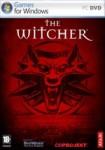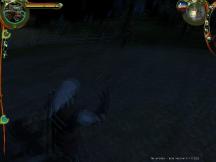Inside The Witcher, Part 2
Character development, combat, alchemy and more.
It was mid 2003 that The Witcher was first revealed. An ambitious action/RPG based on the novels by Polish fantasy author Andrzej Sapkowski, the game promises a dark and morally ambiguous gameworld and meaningful choices. After a long development, the release date is finally approaching and CD Projekt Red and Atari have given us unfettered access to a preview copy to experience the gameplay first hand.
And so, armed with our beta code (labeled v0.70 and dated August), we can delve beyond gameplay movies and deep into the game.
So, after taking a look at the story and questing in the first part, it’s time to delve into the character system and combat.
Character Development
As noted, players take on the specific role of a witcher, Geralt of Rivia. Sapkowski’s books provide a clear template for witchers and CD Projekt has decided to stay true to the source material – which means the character of Geralt is locked into being an althletic male swordfighting specialist. Not a bad thing to be by any means but don’t expect to create a sneaky diplomat or a wizened mage. In fact, there’s no initial character creation - Geralt comes complete with a face, hair (Oh, the hair!) and history.
CD Projekt’s challenge was to create a character development system for this CRPG that gave players some control over their destiny and role, while still fitting into the necessary framework.
The Witcher’s character system is based around 15 traits: four attributes (Strength, Dexterity, Stamina and Intelligence), five magic “signs” and six swordfighting styles. Rather than numerical scores, The Witcher uses a tree-like skill system for each of these traits – CD Projekt describes it as a “trunk” and “branches” (bear with us – it will make sense).
For each trait, there are five skill levels and around four specific skills for each level. Experience points are collected in the usual sense and when a level is gained, three “talents” are awarded (based on our experience so far - this may vary later in the game) – and these talents are spent to access skills. Talents come in three colours: bronze can be used with level 1 and 2 skills, silver for 3 and 4, with gold unlocking level 5 skills.
An example will make this easier, so we’ll jump straight into that. Let’s say we’ve decided to improve Geralt’s Fast attack when using steel swords. Placing a bronze talent in the Level 1 “trunk” for this trait provides a two-blow opening attack sequence with particular damage, attack, parry scores and so on. Spending a talent on Level 2 adds a follow up 4-blow sequence with even better stats. Looking down the Level 1 “branch”, we decide to choose the Paralysis 1 skill – this modifies the Level 1 attack to add a percentage paralysis chance; we’ll need to spend a talent on Paralysis 2 if we want to get the same bonus from the four-blow level 2 attack that can follow the opening sequence.
Some of these skills have synergies: the Patinado skill adds additional damage from sword blows when enemies have first been hit with the Igni fire spell, for example.
Nearly all of the traits are directly related to combat, either by adding or modifying attacks, spells or providing various defensive abilities. Outside of combat, there are skills that relate to alchemy, bomb and oil making – there are no dialogue or diplomacy skills. At the end of the day, most character “builds” will have more similarities than differences – you’ll be able to emphasise defence or magic or alchemy but Geralt will always be a swordmaster first and foremost.
Combat
Sooner or later in any action/RPG, you’re going to get into a fight. The Witcher uses a hybrid system that strings attacks together into long combos, with the right timing. A single click starts the first attack and as it winds to a close, another click at the right time seamlessly strings a second attack after the first to form a combo and so on. Get the timing wrong and the next stroke is aborted, giving the enemy an opening. The result is a combination of Geralt’s skills and the player’s timing.
There are three fighting stances – strong, fast and group – for both steel swords and silver swords, making a total of six different swordfighting styles. Different enemies are susceptible to different styles – heavily armoured humans are probably best dealt with using the strong stance and the steel sword, while drowners require a fast silver sword. The group style uses wide, sweeping blows designed to hit multiple enemies at once.
Each of these six styles has their own combos with unique animations and each skill level adds additional combos and animations. All up, combat looks impressive with spectacular moves – lots of spins and leaps, all with fluid animations. In time, you’ll achieve stunning killing blows such as decapitations and we’ve seen a sequence with Geralt leaping up on an enemy’s shoulders and driving the sword down.
The Witcher features an active pause to manage all of this, so you can pause the action and switch to the best style and weapon for the situation. You can also access the inventory, although actually changing weapons or quaffing a potion occurs when the action is resumed, so you’ll have to be careful in the middle of battle. Speaking of changing weapons, Geralt can use axes, daggers and even torches but you’ll forfeit all those specialist witcher skills.
Right-clicking unleashes a “sign”- one of five spells that Geralt can learn and master with the character system. The signs are designed to complement the swordfighting (rather than stand alone), such as knocking attackers back with a powerful blast of energy or a “wall of fire” effect.
Dodging and parrying is based on the character skills, rather than player control. Nevertheless, double-tapping a direction key (or double-clicking the ground in the isometric view) executes an evasive manoeuvre, such as somersaulting backwards. As with the attacks, each of the six styles has different evasive moves, so the grand total of all these moves is some impressive animation.
All this makes combat fast paced and engaging, without being overly “twitchy”. There’s more interaction than a Diablo-style action/RPGs but the system is still fairly simple, so it’s hard to gauge how it will hold up over the course of a long game.
Diversions
There’s another element related to combat: alchemy. Most RPGs treat alchemy as an interesting diversion but it’s more central in The Witcher, with a more realistic feel. Ingredients can be collected from various monsters and plants and combined with a suitable alcohol base to make various potions, although you’ll first need to obtain recipes and details about harvesting each ingredient from books or NPCs. Potions are really more like drugs in The Witcher, offering performance enhancements at the cost of side-effects such as blurry vision and even death, if you use too many before meditating to cleanse the effects. Some of the larger set-piece fights seem to require the appropriate use of potions to get through and (so far) they can’t be easily bought, so you’ll need to watch for and collect the rare ingredients and carefully manage their use.
Minigames are often tacked-on and sub-par but The Witcher does a good job integrating at least two of the games on offer – the third you can decide for yourself. You can play poker using dice with various NPCs, winning money and ranks. In the tavern, you can engage in a bare-fist boxing tourney, again winning money. Finally, you can…ahem…get to know some of the ladies, winning cards to remember your exploits – check out the nearby screenshot for one of the more tasteful examples.
Closing Thoughts
The beta version we have has been very stable and reasonably bug-free, with decent performance on a modest gaming rig (a reliable 30fps at 1024x768 with high settings on a P4 3.2Ghz, 256Mb Geforce 6800GT and 2Gb RAM), so we have high hopes for a solid release. There are a number of areas to be polished, such as minor glitches in in-game cutscenes and poor lip-synching – something we wouldn’t ordinarily focus on but The Witcher uses ingame cut-scenes frequently and every conversation zooms in to a widescreen cinematic view. There are also some occasional immersion-breaking issues that we hope are tidied up, such as NPCs that don’t react to nearby monsters and initiating a conversation just as a monster approaches can freeze the enemy in the background of the cinematic conversation view as you idly chat. The good news is that these are small items in the scope of everything The Witcher gets right and there should be time to work these kinks out.
We’ve really enjoyed the time we’ve spent with The Witcher so far. The world is rich, layered and convincing and the story and quests have been appealing. The centrepiece of the design – the choices with consequences that become evident as the game progresses is very promising and we hope the obvious potential is fulfilled over the course of the entire game. It’s different – some players may feel uncomfortable that they can’t easily tell where a choice is going - but it’s nice to see a developer try to push the genre boundaries just a little. The combat is much better than we expected, although we suspect some players would still prefer a direct action system like Gothic or Oblivion. On the other hand, while CD Projekt has obviously worked hard creating a character development system that stays true to Sapkowski’s vision - yet still offering lots of skills to customise the character - the focus is very, very narrow.
At the end of the day, we can’t wait to get back to playing more, and that says a lot.

Information about
The WitcherDeveloper: CD Projekt RED
SP/MP: Single-player
Setting: Fantasy
Genre: RPG
Combat: Pausable Real-time
Play-time: Over 60 hours
Voice-acting: Full
Regions & platforms
World
· Homepage
· Platform: PC
· Released: 2007-10-26
· Publisher: Atari
More information







